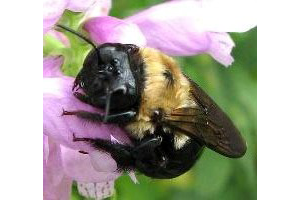Although they chew into wood to make their nests, carpenter bees do not eat wood.
Photo Credit: J.C. Lucier
Xylocopa virginica
Common Name: eastern carpenter bee
Other Common Names: Virginia carpenter bee
Animal Guild: Insect
Class > Order > Family: Insecta > Hymenoptera > Apidae
